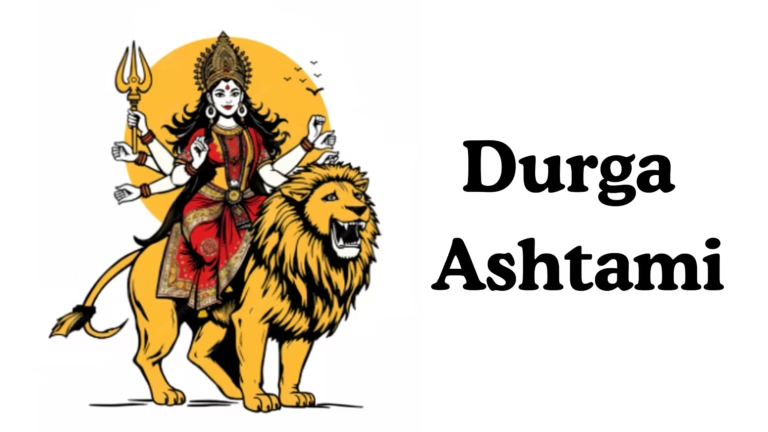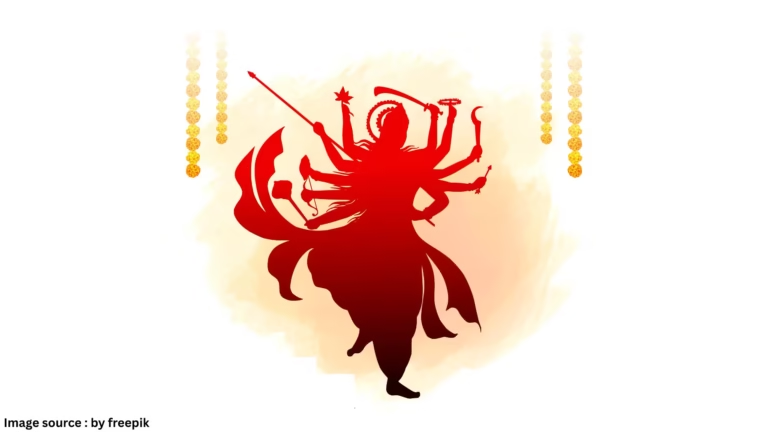On the autumn full moon night, India celebrates this festival by many names—Kojagiri Purnima, Sharad Purnima, Kojagara/Kaumudi Vrat; in Braj it’s known as Raas Purnima, and in Gujarat as Sharad Poonam. Tradition holds that on this night the Moon is manifest with all sixteen kalas (phases of perfection) and its cool rays are believed to carry soothing and nutritive qualities. In Maharashtra and the Konkan region, the festival is linked to the question “Ko jagarti?—Who is awake?”—signifying that those who keep vigil in devotion to Goddess Mahalakshmi are blessed with prosperity.
This article offers a practical, authentic, and SEO-friendly guide for 2025—covering the date, puja method, moonrise (chandra-darshan), the kheer-under-moonlight custom, and regional observances—so you can prepare confidently without confusion.
Table of Contents
When is Kojagiri Purnima in 2025? (Date & Key Timings)
Date: Monday, 6 October 2025 (India)
Purnima Tithi (as per major Indian panchangs):
- Begins: 06 October 2025, 12:23 PM
- Ends: 07 October 2025, 09:16 AM
Moonrise / Chandrodaya (Example):
- New Delhi: around 05:27 PM (local time)
- Moonrise varies by city by a few minutes. Always check your local panchang for city-specific timings.
Nishitha Kala (midnight window ideal for Lakshmi Puja) – varies by location; for example:
- Pune: approx. 11:58 PM – 12:47 AM (7 October)
- Mumbai: approx. 12:02 AM – 12:51 AM (7 October)
Tip: Sunrise, moonrise and Nishitha Kala change slightly by location and date. For vrat/puja timing, always confirm with your city’s panchang.
Kojagiri Meaning | Philosophical Context & Regional Traditions
The word “Kojagiri” is associated with the folk query “Ko jagarti?” (Who is awake?)—the belief being that those who keep a devotional night vigil in remembrance of the Divine have their wishes fulfilled. In Bengal and Eastern India, the night is famed for Lakshmi Puja and Kojagara Vrat. In Braj, it is also called Raas Purnima in remembrance of Krishna’s divine sports. In Gujarat, Garba/Dandiya and kheer-prasad are prominent. In Maharashtra–Karnataka–Goa, families gather under the open sky to sit in the moonlight and partake of kheer/milk, considered auspicious.
Also read: Diwali 2025: Complete Guide & Significance
Vrat & Sankalpa: Who Can Observe and How?
Both men and women can keep the Kojagiri Purnima fast. Many newly married women begin their Purnima-vrats from this day. Typically, the fast is observed from sunrise until moonrise. Some devotees take phalahar/milk, while others keep nirjala (without water)—follow this per your health, family tradition, and spiritual guidance.
Pre-Puja Preparation (Materials & Place)
Choose a clean, airy spot where moon-viewing is possible. Keep the following:
- Images/idols of Lakshmi–Ganesha, kalash, clean water
- Leaves such as mango/betel (or locally available sacred leaves)
- Roli–kumkum, akshata (unbroken rice), flower garland
- Deep/ghrita (ghee) lamp, incense/dhoop
- Naivedya (kheer / makhan–mishri / kheer–poha)
- Tulsi leaves, cowries/whole rice, supari, red cloth, shankha/ghanta (conch/bell)
- For chandra-argya: raw milk, water, sugar/mishri, white flowers
Kojagiri Vrat: Step-by-Step Puja Method (Detailed)
1) Sankalpa & Space Purification
Bathe at sandhya/pradosha time and take the vrat-sankalpa. Sprinkle Ganga water (or clean water) around the puja space and light the lamp.
2) Deva-Avahana
Begin with Ganesh Puja, then invite Mahalakshmi. Recite from Shri Suktam / Lakshmi Ashtakam / Kanakadhara Stotram as convenient.
3) Lakshmi Puja
Apply roli–akshata tilak, offer flowers, dhoop–deep and naivedya. Symbolically place your cash box/ledgers/work tools, and offer akshata/flowers to them too—this signifies prosperity.
4) Chandra Puja & Argya
After moonrise, offer argya to the Moon. Mix water, milk, sugar/mishri, and white flowers in the argya vessel. Chant a Chandra mantra such as “Om Shram Shrim Shraum Sah Chandraya Namah” or “Om Chandraya Namah.” Some traditions count 108 japa—do as per your capacity.
5) Kheer Ritual (Under Moonlight)
Soon after moonrise, place kheer (or milk) in a wide silver/clay/glass bowl under the open sky so the moonbeams can fall on it. Cover it lightly with muslin/food-grade net to prevent dew/dust/insects while allowing light. Traditionally, the bowl is kept out all night. Distribute it as prasad next morning within the family.
6) Night Vigil / Bhajan–Kirtan
Where possible, do bhajans of Lakshmi–Narayana, chant Vishnu Sahasranama / Shri Suktam. This is the essence of “Ko-jagar”—staying awake in satsang.
7) Parana (Fast Completion)
Many households break the fast after offering argya to the Moon by taking phalahar/kheer; some traditions advise parana next morning. Follow your guru/family tradition.
Moon-Viewing: Correct Timing & Practical Safety
Why it matters: In most traditions, parana (ending the fast) is done after moonrise/moon-viewing. Offering water/milk argya to the Moon is a prayer for health, tranquility and emotional balance.
How to determine timings?
- Moonrise varies by city. Across India in 2025, it will generally be around 5:30 PM, with minute-level variations across regions.
- For example, in New Delhi on 6 October, moonrise is around 05:27 PM.
- Nishitha Kala (for Lakshmi Puja) falls around midnight; e.g., Pune approx. 11:58 PM – 12:47 AM, Mumbai approx. 12:02 AM – 12:51 AM (7 October).
Practical precautions:
- When placing kheer/milk outside, cover with a fine net/muslin. Avoid tight plastic lids so moonlight can reach while keeping hygiene intact.
- Choose an elevated, clean, pet/bird-safe spot in the open.
- Avoid direct refrigeration immediately; in the morning check aroma/taste/appearance before serving.
- Devotees with illnesses/diabetes/allergies should consult their physician; alternatively, take a small prasad portion.
Ayurvedic & Scientific Lens: The ‘Moonbeam Bath’ Custom
Folk wisdom says that on Sharad Purnima, dew/moisture and moonlight make food cooling and easier to digest. Ayurveda considers Sharad ritu suitable for pitta-pacification; hence the symbolic practice of taking milk/kheer exposed to the moon. From a modern-science perspective, treat this as a cultural–spiritual ritual while maintaining strict food safety and cleanliness when keeping edibles outdoors.
Regional Variations: Maharashtra, Bengal, Braj & Gujarat
- Maharashtra/Konkan: Families and friends sit on the terrace/courtyard in the moonlight; kheer/milk sherbet is shared as prasad; many places host cultural evenings (music/instruments).
- Bengal/Odisha/Assam: Special Lakshmi Puja at homes/shops with lamps and Goddess worship.
- Braj/Mathura–Vrindavan: Bhajan–kirtan in remembrance of Raas-lila; special temple events.
- Gujarat: Garba/Dandiya celebrations glorifying Sharad Poonam; distribution of milk/kheer prasad.
Do’s & Don’ts (Traditional Guidance)
Do:
- Combine your vrat-sankalpa with satsang/recitation—Shri Suktam, Lakshmi Ashtakam, Vishnu Sahasranama.
- Offer akshata/kumkum to your ledgers/tools/cash box as a sign of prosperity.
- Practice daan/annadaan—offer food/clothes to those in need.
Don’t:
- In some lineages, avoid savory/regular meals before moon worship.
- Do not leave kheer/milk uncovered in the open—hygiene first.
- Do not follow practices that strain health merely out of custom—health comes first.
Vrat Rules, Parana & Next Morning Rituals
- When to break the fast? Commonly after offering argya to the Moon with phalahar/kheer; some traditions do parana in the morning.
- Next morning: Distribute kheer/prasad, seek blessings of elders and the Griha-Lakshmi, and take a daily japa/charity resolve.
- Symbols of wealth/gain are indicative—steady effort, sattvic living and dharma are the lasting bases of prosperity.
At a Glance: Key Timings for 2025 (India)
| Component | Time/Date |
|---|---|
| Kojagiri Purnima (India) | Monday, 6 October 2025 |
| Purnima Tithi Begins | 06 Oct, 12:23 PM |
| Purnima Tithi Ends | 07 Oct, 09:16 AM |
| Moonrise (Example—New Delhi) | ~05:27 PM |
| Nishitha Kala (Example—Pune) | ~11:58 PM – 12:47 AM (7 Oct) |
| Nishitha Kala (Example—Mumbai) | ~12:02 AM – 12:51 AM (7 Oct) |
Note: The above examples are location-specific. Always verify your city’s exact timing on a local panchang/reliable calendar.
Frequently Asked Questions (FAQ)
Q. Are Kojagiri Purnima and Sharad Purnima the same?
Yes. In many parts of India, the same full-moon night is known by these names, though regional customs vary.
Q. How long should the kheer stay outside?
Traditionally overnight (from moonrise until next morning). In practice, keep it covered and hygienic and distribute promptly as prasad in the morning.
Q. What can I consume during the fast?
Phalahar/milk/kheer are common; some traditions observe nirjala. Follow your health needs and family tradition.
Q. What is the correct rule for parana?
Most observe parana after offering argya; some do it next morning. Seek guidance from your guru/family elders.
Q. Is this festival only about Lakshmi Puja?
While Lakshmi Puja is central in many regions, Krishna-bhakti traditions (Braj) emphasize Raas-lila remembrance; in Gujarat, Sharad Poonam Garba is prominent; in Maharashtra, family vigil in moonlight stands out.
Kojagiri Purnima 2025 is a graceful confluence of prosperity, well-being, and cultural unity. With timely preparations, verified local timings, mindful hygiene, and satsang-bhakti, this night becomes more than a ritual—a cherished family experience.
Also read:



